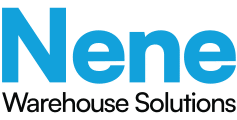Common Warehouse Hazards And How To Prevent Them
Contents
When you consider there are only 365 days in the year, the number is staggering and of great cost to the UK economy.
With deadlines tight and demand for goods 24/7, it is of no surprise that a warehouse or industrial facility can be hazardous when not kitted out effectively, and those using it have not had suitable training. For some, the dangers are plain to see or don’t seem to be of much concern. But it is these often overlooked and seemingly recognisable hazards that can cause the most problems.
Here we look at the main culprits and how best to prevent them…
Trips, Slips, and Falls In Warehouses
By now, most have seen the videos and training of the seemingly basic efforts not to fall, trip, or slip, to then not give it a second thought. But it is the basics that keep the day-to-day running of the facility safe, seamless, and productive. If the basics are not right, then trouble is looming.
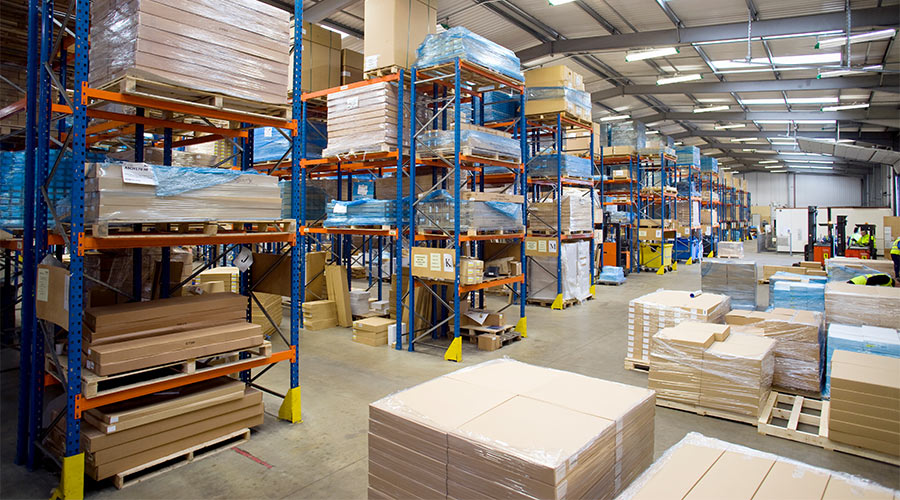
Be aware
What is on the floor? Operational debris such as tape, discarded tape rolls, packing straps, and shrinkwrap are just some of the things that can cause serious injury. Catching your feet in these to trip over, especially when carrying something, can cause injuries to a person who cannot foresee or cushion their fall.
By having a policy in place for operational clean-ups throughout the day, and bins and recycling points in regular intervals to remove waste from the warehouse floor and racking areas, you will reduce the risk of this happening and improve your green credentials at the same time for recycling.
Cleanliness
Spillages can be easily overlooked on a flat, usually grey or beige floor, yet cause serious harm to someone falling in it, even if the puddle appears to be small. The outside elements can cause issues too, particularly throughout the autumn and winter months and where there is a combination of outdoor and indoor stored goods onsite for picking.
Cleanliness is imperative in a warehouse to ensure floors and railings are not slippery. Strict maintenance and cleanliness training should be delivered to all staff to promote cleanliness and safety. Practical measures should be in place with items such as rubber safety matting in problem areas, safety grip tape on stairs, ledges, and high locations, and cleaning materials easily accessible for both hazardous and non-hazardous incidents.
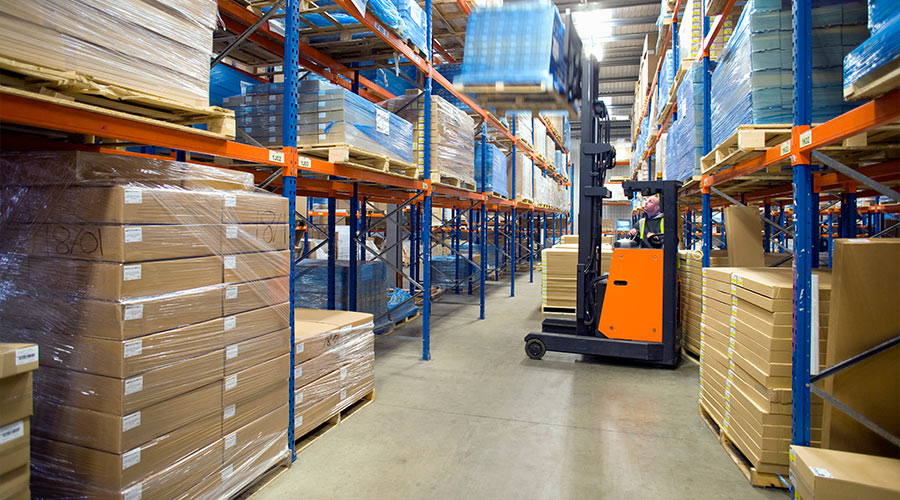
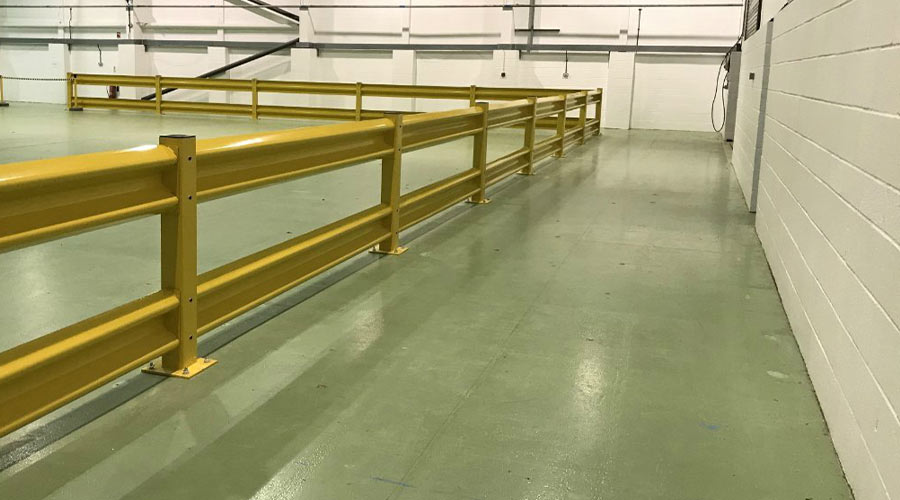
Railing and signage
In addition to the preventative measures on the floor, guard railings are an excellent solution to keeping workers safe; in high-up locations and areas where workers and machinery work in close proximity. Guarding edges throughout the facility and making them obvious with either hazard floor edgings or yellow guard rails will help towards reminding workers of their parameters of work.
Employers must have suitable signage relevant to the facility and machinery contained within it. The Health and Safety Regulations 1996 states that:
‘Safety signs and signals are required where, despite putting in place all other relevant measures, a significant risk to the health and safety of employees and others remains’.
Signs must be clear and legible and should be used to identify actions that are prohibited (e.g. no access), safeguards that must be followed (e.g. ear protection must be worn), warning of a hazard (e.g. corrosive material), and to direct towards fire exits/equipment or first-aid equipment.
Having floor signage and marking out areas of work effectively will also important to manage workflow and ensure employees know where they need to be. The sign printing service from Nene is perfect for this.
There is such a thing as too much signage and this should be avoided so as not to confuse. Make sure your signage is easily accessible and caters to a diverse workforce, ensuring everyone on-site understands them.
Rack Safety Training
Rack safety training is essential, giving workers the knowledge of warehouse racking systems and how to keep them maintained through the procedure of inspections and risk assessments as well as advising on the safety of industrial lift trucks. Safety training covers the following:
- Learn new regulations and current SEMA guidelines
- Identify key components of the storage system
- Recognise damage and potential hazards
- Learn how to report damage
- The importance of load signs
- How to prevent damage from occurring
- Use of industrial lift trucks
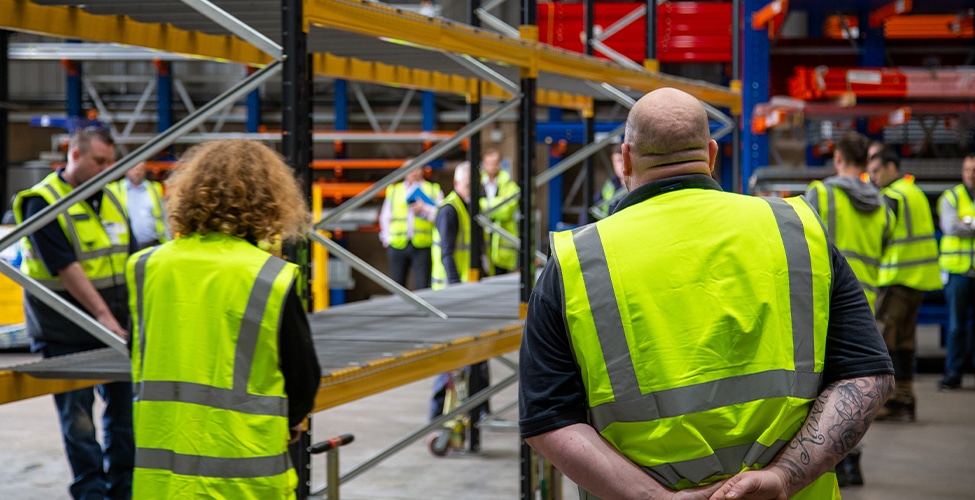
Physical strain
What effects someone might not affect others, but there are general practices that everyone can follow and preventative measures to reduce the risk of pains and strains.
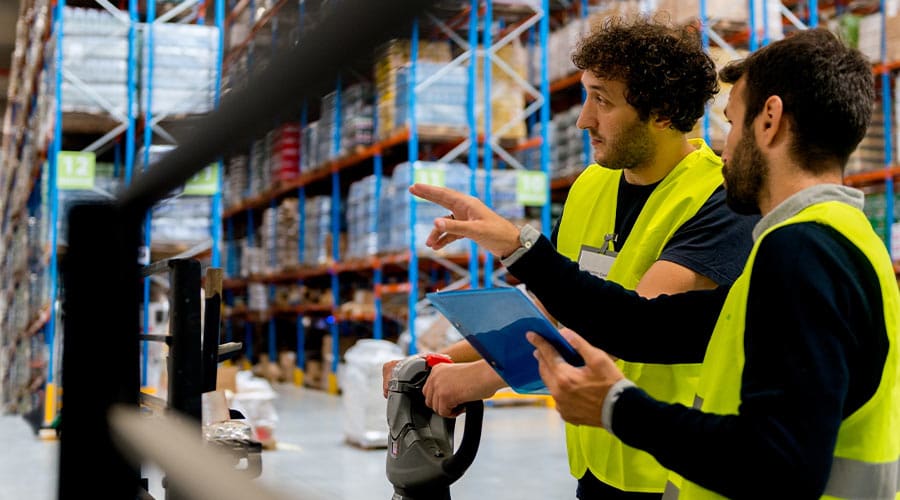
Training and risk management
In picking and packing particularly, training workers in how best to perform their duties safely to limit the risk of causing injury is paramount. With manual handling cited as one of the top causes of musculoskeletal workplace injuries by the HSE, training is prevention 101. From simply bending at the knees to adhering to two-man lift signage, weight-bearing done correctly should not cause injury, unless the individual goes over their limits. Ensure your training and manual handling risk management procedures, and any others that are relevant to you, are up-to-date and fit for your facility. Pay that knowledge forward in regular safety courses and training for your staff, and upskill them in these areas.
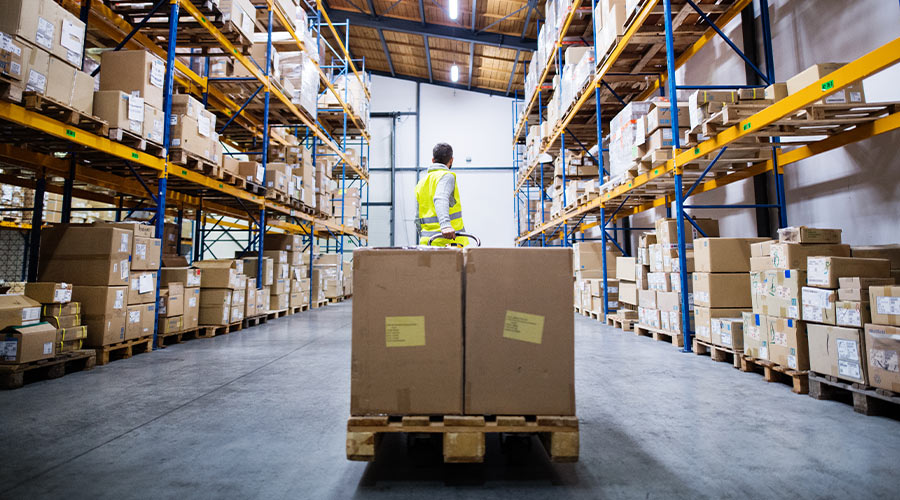
Encourage self-awareness
Individuals must take responsibility for their safety too. No matter how many preventative measures you implement, if someone is determined to be ignorant of the potential risk to themselves, then the onus is on them. Engage with your employees regularly and ensure they have time to absorb all the information given to them. A safety leaflet on their first shift with a view to training them further in the future is not enough. Train them thoroughly, but also aim to instil in them the need to look after themselves and their colleagues around them. It need not be patronising, just keep the safety conversation going.
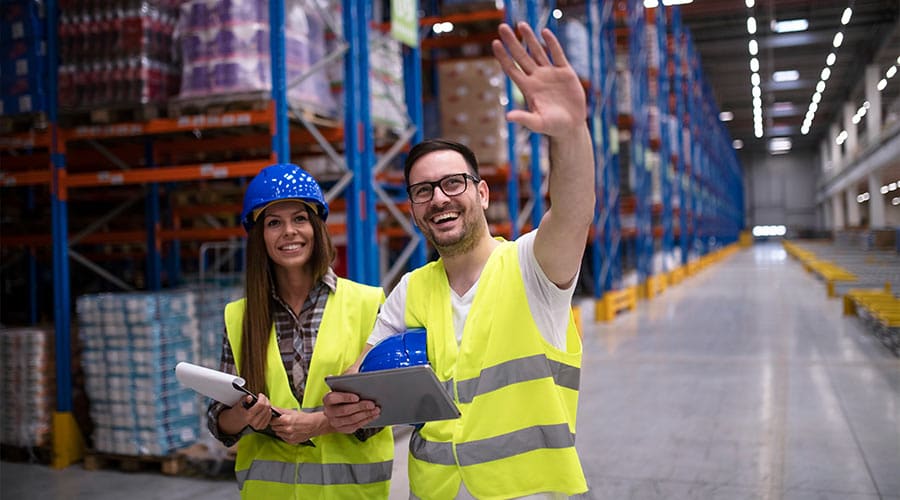
Company benefits
Not a traditional preventative measure perhaps, and one you would hope never to need, but, depending on the feasibility within your business, you could offer medical or therapeutic contributions as part of their employee benefits package. Discounts towards osteopathy, chiropractic care, or even podiatry can be very well received by employees. This could be in addition to private medical or as a stand-alone benefit. Either way, it shows a level of care by the business that employees can take advantage of should the need arise, whilst at the same time keeping them happy, healthy, and productive at work.
Machinery
No doubt using machinery incorrectly can cause serious injury and even death. Complacency, shortcuts, poor training, and maintenance issues can all contribute to mechanical injuries at work.
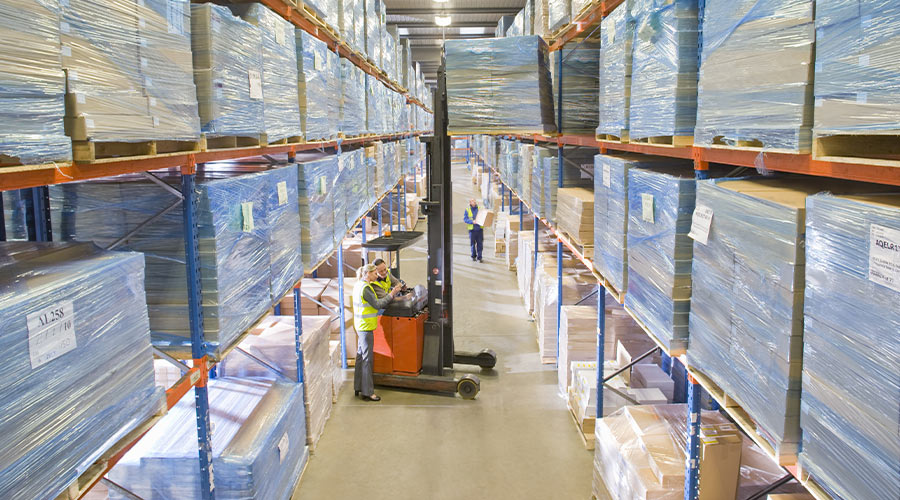
Maintenance
Machinery, when installed by professionals, will most likely now come with the option of a maintenance package, particularly where licensing is involved. Pre-inspection servicing and maintenance throughout the year are important to keeping production moving and workers safe. Pallet racking installations such as those installed by Nene offer comprehensive, SEMA-accredited maintenance packages, delivered by experts in the industry.
You may need to update your machinery for that with increased safety and stop features and functions, or existing warehouse racking is out of date and falling apart. A replacement may seem costly but in reality, is a priceless investment in comparison to the safety and legal costs of getting it wrong. When it comes to racking, is where the experts at Nene can guide you, with a full assessment, design, and installation services on offer.
Moving components
All types of machinery have moving components to function and so arms, hands, and fingers can typically be at high risk. From using drills for maintenance and label machines for packing to forklift trucks and racking aids, it is vital for all machinery that the moving components are maintained properly. Ensuring moving parts are not rusty, that replacement parts are up to standard, fit for purpose and where necessary, are fixed or replaced by a professional. DIY jobs on your machinery where not appropriate can put your employees and business at risk.
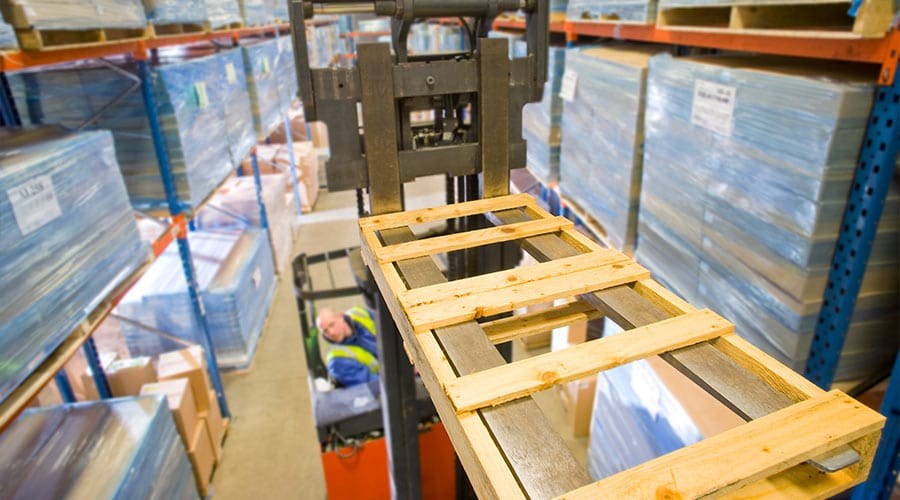
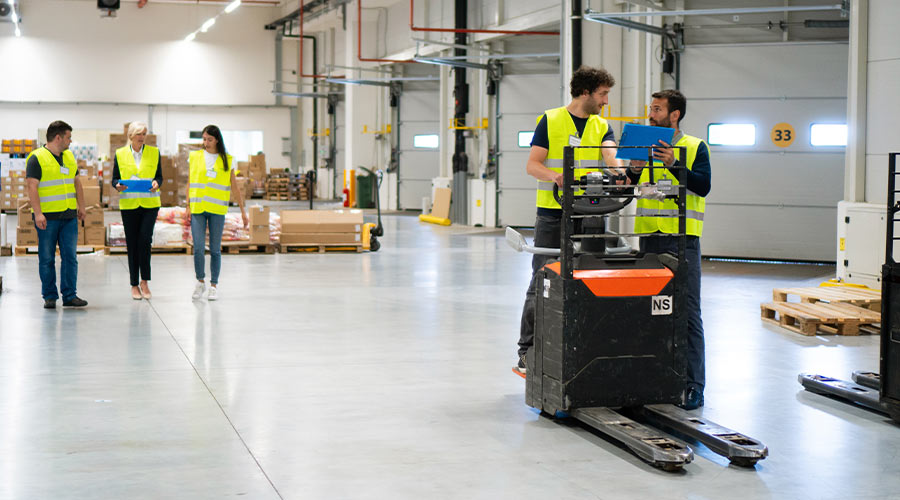
Training and certification
New employees, operators that have become complacent over time, or those that have developed ‘handy short cuts’ that are of benefit to no-one when they go wrong, nearly all heavy machinery requires training and should be delivered regardless. Some will require licensing; forklift operators, in particular, must be certified to drive the machinery, or the employer can leave themselves at risk of prosecution under regulation 9 of PUWER and the Health and Safety at Work Act, section 2 (c) in the event of an accident. Ensure that all employees, contractors, and temporary staff training is up to date. Implement a training matrix to keep your records current and give yourself peace of mind that no dates or licenses have lapsed.
There is a myriad of things to consider and implement for warehouse safety. But keeping on top of training and up to date with the fundamental foundations is paramount to keeping your employees safe and production moving. Take advantage of the experience and expertise of your suppliers such as Nene and utilise resources such as the HSE to guide you. A healthy workforce is a happy one, and it is they that will keep your business thriving.
